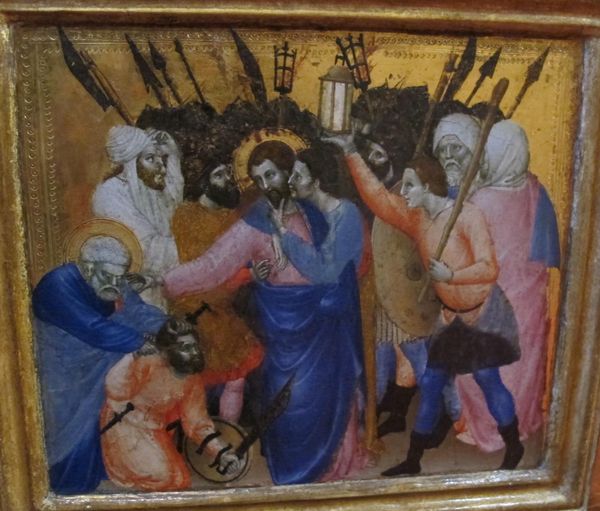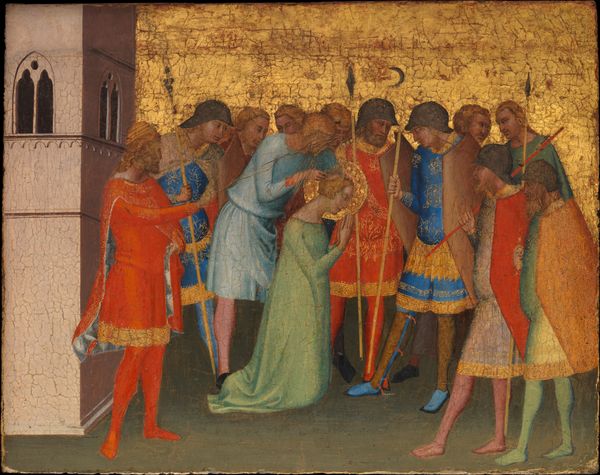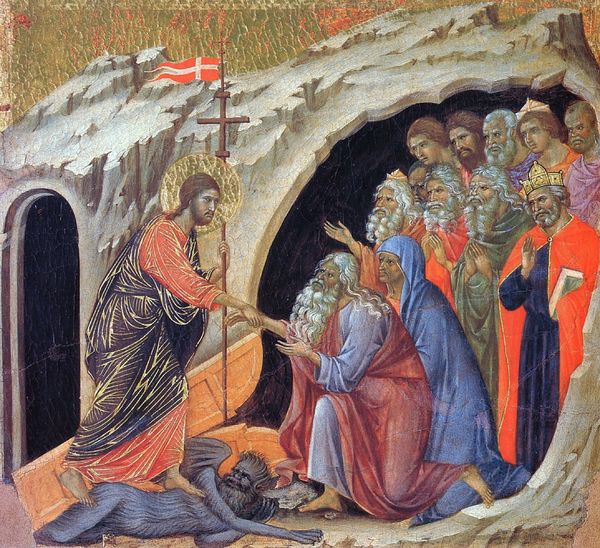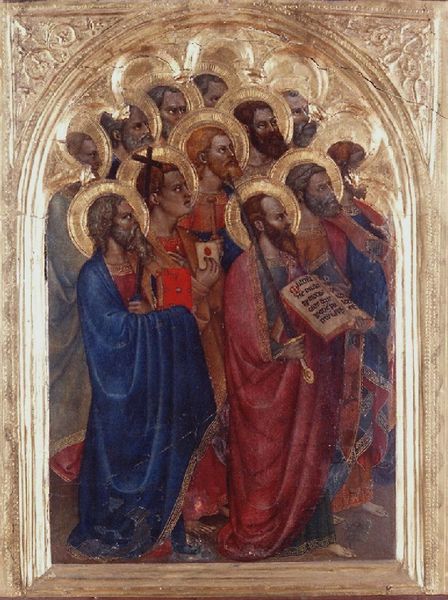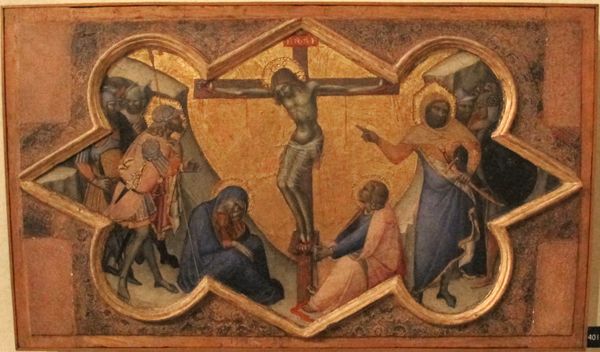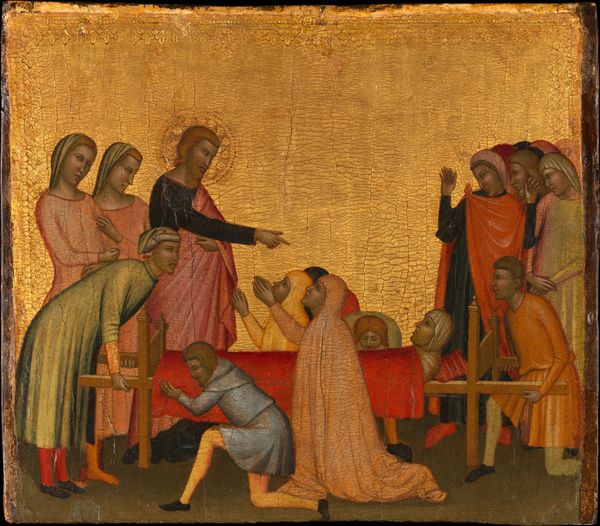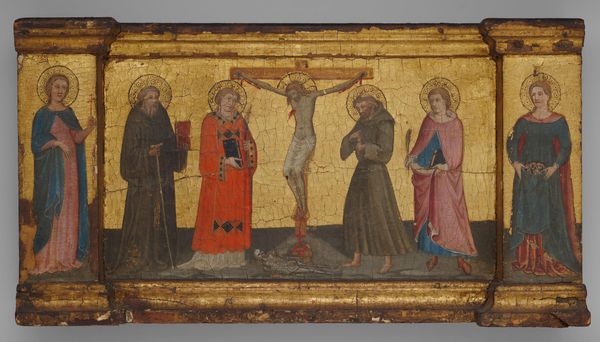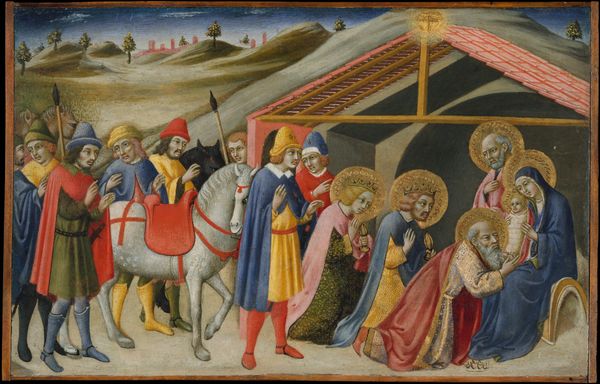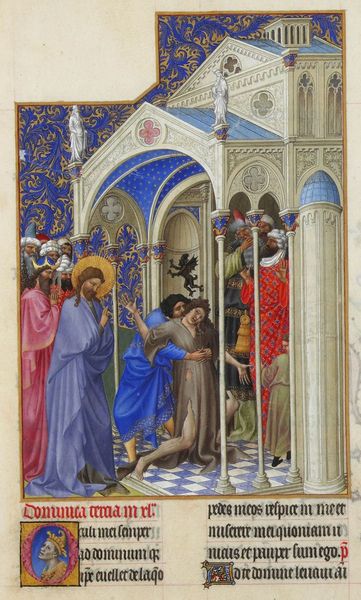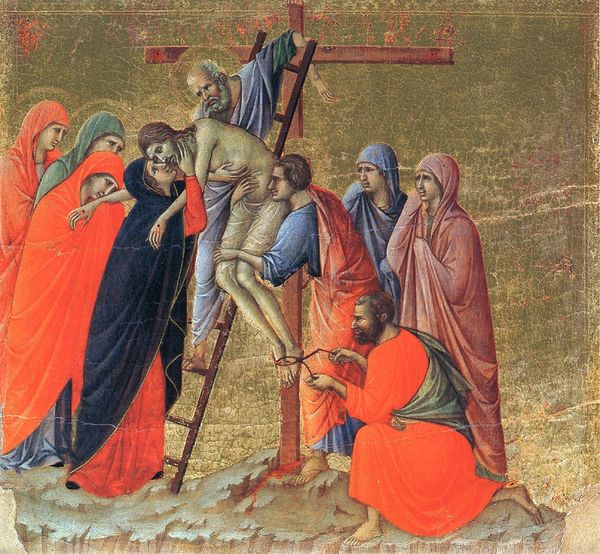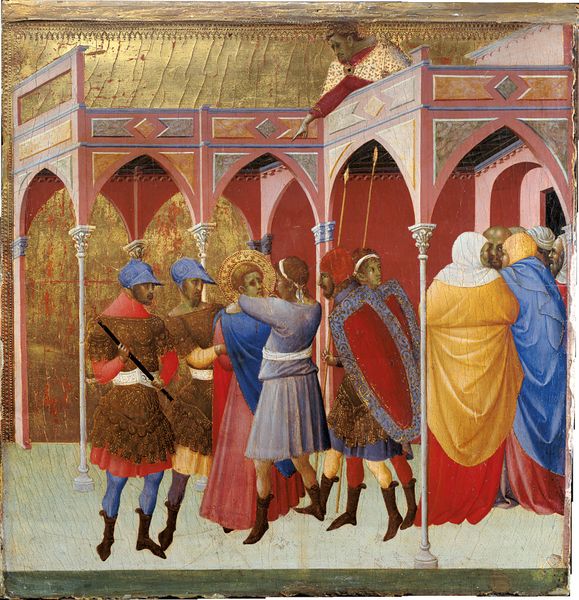
tempera, painting, gouache
#
portrait
#
gouache
#
medieval
#
narrative-art
#
tempera
#
painting
#
gouache
#
figuration
#
history-painting
#
italian-renaissance
Copyright: Public domain
Editor: This tempera and gouache painting, “Da Spedale Della Misericordia, Predella 5, Via Crucis,” was created around 1370 by Giovanni da Milano. It's remarkable how crowded and emotionally charged the composition is. What can you tell me about how the history of the period informs its meaning? Curator: Considering this piece as part of a predella for the Via Crucis gives us context. Think about where this would have been displayed – a hospital. Who were the intended viewers? A key question is how Giovanni da Milano's depiction of Christ carrying the cross served to console the sick and dying who saw themselves, and their suffering, reflected in this image. Editor: So, the display in the hospital setting heavily influenced the viewers? Curator: Precisely. In that era, hospitals weren't just places for healing; they were deeply connected to religious practice. Art was a powerful tool for communicating spiritual ideas to a largely illiterate population. Consider how the suffering in the painting connects with institutional practices and the acceptance of unavoidable circumstances. Why do you think he emphasized the struggle in Christ's face? Editor: Maybe to offer hope? Even in the darkest moments, symbolized here through the Via Crucis, there’s a promise of something more? Curator: Exactly. This artwork not only depicted a biblical story but also served as a reflection of and a meditation on human suffering within the specific social context of its time. Editor: I see now how the museum's role in preserving it allows us to understand how social factors of the era contribute to a fuller understanding of the artist's decisions and intentions. Curator: Absolutely! Looking at the social context helps understand what art’s purpose was back then.
Comments
No comments
Be the first to comment and join the conversation on the ultimate creative platform.
